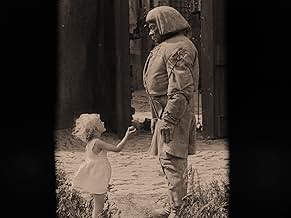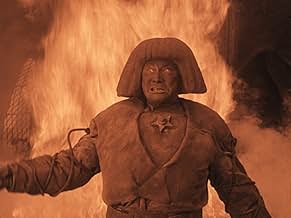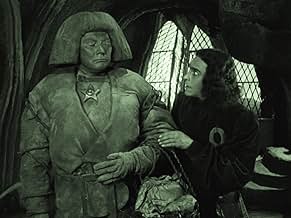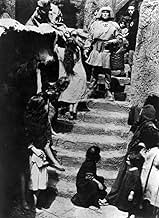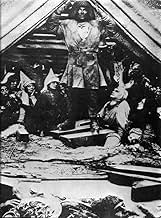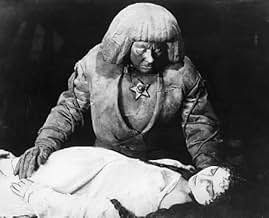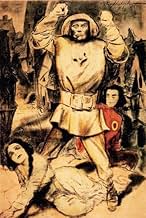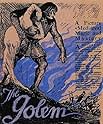NOTE IMDb
7,2/10
9 k
MA NOTE
Au 16e siècle, à Prague, un rabbin crée le Golem, une créature géante faite d'argile. Grâce à la sorcellerie, il donne vie à la créature afin de protéger les Juifs de Prague des persécutions... Tout lireAu 16e siècle, à Prague, un rabbin crée le Golem, une créature géante faite d'argile. Grâce à la sorcellerie, il donne vie à la créature afin de protéger les Juifs de Prague des persécutions.Au 16e siècle, à Prague, un rabbin crée le Golem, une créature géante faite d'argile. Grâce à la sorcellerie, il donne vie à la créature afin de protéger les Juifs de Prague des persécutions.
- Récompenses
- 1 victoire et 1 nomination au total
Hans Stürm
- Der Rabbi Jehuda, der Älteste der Gemeinde
- (as Hans Sturm)
Carl Ebert
- Temple Servant
- (non crédité)
Fritz Feld
- Jester
- (non crédité)
Loni Nest
- Ein kleines Mädchen
- (non crédité)
- …
Ursula Nest
- Little Girl
- (non crédité)
Dore Paetzold
- Des Kaisers Kebse
- (non crédité)
- …
Märte Rassow
- Kind
- (non crédité)
Commentaire à la une
In 16th-century Prague, a Jewish rabbi (Albert Steinrück) creates a giant creature from clay, called the Golem, and using sorcery, brings the creature to life in order to protect the Jews of Prague from persecution.
Called "one of the most ambitious productions of the silent era" by Mike Mayo, the film is a blend of religion, astrology and black magic -- mixing Judaism with a conjuring of the demon Astaroth.
The film also has an interesting presentation of anti-Semitism, where the emperor accuses the Jews of killing Christ, among other things, and orders them to evacuate the ghetto. How did Germany in 1920 feel about the Jews? We now know how they felt a decade later, but was this hatred always there or invented by Hitler? If it existed, how did it translate to this film's reception by the German people?
Paul Wegener's face is a wealth of visions -- he manages to use his eyes in such a way that present the golem as simultaneously stoic and intensely emotional.
Others have pointed out that Karl Freund's camera is remarkably still for a man who would go on to be known for the most innovative camera techniques in film history (I dare say he is the greatest cinematographer who ever lived). Mayo says there is an "inventive use of extreme camera angles", but I did not notice. The lack of movement does not hinder the film, however.
Lee Price praises the film, saying the only fault of the film is "the inconsistency of the acting", though I did not find it distracting at all (even if the frightened faces of the extras are a bit extreme). Price calls the architecture of the film as influential (or more so) than the German Expressionism of "Caligari". He is not alone in this view: Ivan Butler makes a point to mention the "strange twisted buildings and crooked streets filled with steeple-hatted inhabitants", and Siegfried Kracauer singles out the "maze of crooked streets and stooped houses" devised by Professor Hans Poelzig.
If you are to see or own this film, I recommend the Kino DVD. Not only is the film cleaned up nicely, with a wonderful score and English title cards, but the supplements are beyond what one would expect from such an old film -- featurettes comparing this movie to "Faust" and the later "Le Golem". I enjoyed them.
Called "one of the most ambitious productions of the silent era" by Mike Mayo, the film is a blend of religion, astrology and black magic -- mixing Judaism with a conjuring of the demon Astaroth.
The film also has an interesting presentation of anti-Semitism, where the emperor accuses the Jews of killing Christ, among other things, and orders them to evacuate the ghetto. How did Germany in 1920 feel about the Jews? We now know how they felt a decade later, but was this hatred always there or invented by Hitler? If it existed, how did it translate to this film's reception by the German people?
Paul Wegener's face is a wealth of visions -- he manages to use his eyes in such a way that present the golem as simultaneously stoic and intensely emotional.
Others have pointed out that Karl Freund's camera is remarkably still for a man who would go on to be known for the most innovative camera techniques in film history (I dare say he is the greatest cinematographer who ever lived). Mayo says there is an "inventive use of extreme camera angles", but I did not notice. The lack of movement does not hinder the film, however.
Lee Price praises the film, saying the only fault of the film is "the inconsistency of the acting", though I did not find it distracting at all (even if the frightened faces of the extras are a bit extreme). Price calls the architecture of the film as influential (or more so) than the German Expressionism of "Caligari". He is not alone in this view: Ivan Butler makes a point to mention the "strange twisted buildings and crooked streets filled with steeple-hatted inhabitants", and Siegfried Kracauer singles out the "maze of crooked streets and stooped houses" devised by Professor Hans Poelzig.
If you are to see or own this film, I recommend the Kino DVD. Not only is the film cleaned up nicely, with a wonderful score and English title cards, but the supplements are beyond what one would expect from such an old film -- featurettes comparing this movie to "Faust" and the later "Le Golem". I enjoyed them.
Histoire
Le saviez-vous
- Anecdotes"Aemaet", the life-giving word which Rabbi Lowe compels from the spirit Astaroth is also reflected in the bolts of lightning at the end of the creation scene.
- GaffesThe story is set in the 16th Century. A prediction of doom is made based on the movements of Uranus, which was not discovered until 1781.
- Versions alternativesThe 2002 Alpha Video DVD version runs for 101 minutes. This is not evident from the back of the Alpha Video DVD case, which wrongly lists the running time as only 85 minutes. It looks as if Alpha Video somehow got hold of the fullest version currently known - maybe even a complete version of the film, since there are no obvious gaps in the story.
- ConnexionsEdited into People Who Die Mysteriously in Their Sleep (2004)
Meilleurs choix
Connectez-vous pour évaluer et suivre la liste de favoris afin de recevoir des recommandations personnalisées
- How long is The Golem?Alimenté par Alexa
Détails
- Durée1 heure 16 minutes
- Couleur
- Mixage
- Rapport de forme
- 1.33 : 1
Contribuer à cette page
Suggérer une modification ou ajouter du contenu manquant










